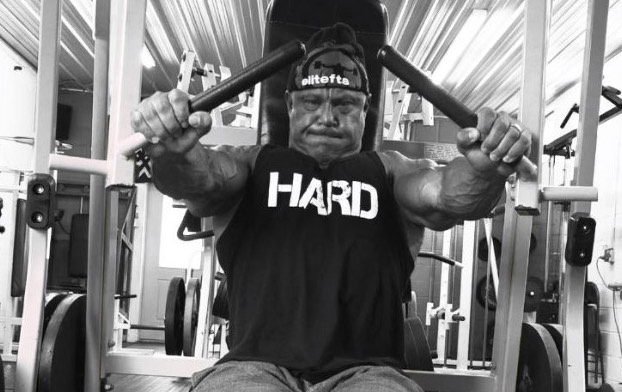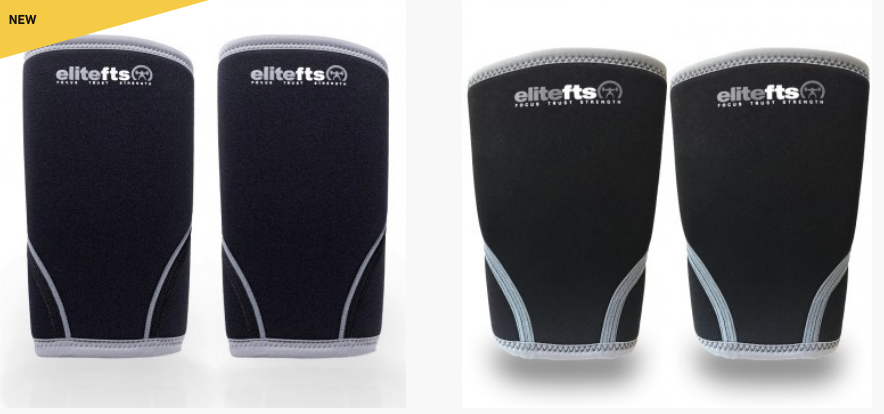
For the last 15 months, I have been dealing with the worst injury of my 38 years of training. Even though it has continued to progress, albeit slowly, it is most certainly not 100%. It is possible that it may never be, but because of my love for training (and being stubborn), I will continue to find ways to continue to train while the injury improves.
Below, I am going to lay out an example of a leg session that I just did last night. I am doing this to show the thought process behind it and why you have to be smart if you plan to train through or around an injury either while it is recovering, or if the injury may never recover. It's a safe bet that I am not the only one who is working through or around an injury. You might not have a knee injury, but the process of programming around an injury still involves being logical, taking small risks, and being patient at the same time.
It is important to note that my philosophy used to be to let major injuries rest to recover. Sometimes, that absolutely has to happen. More often than not, there is a shorter period of rest and then being active to supply blood flow to the injured area is more beneficial than just letting it sit while you wait for it to recover. I only learned this after dealing with injuries over the last 10 years. I wished I would have learned it sooner.
Of course, it depends largely upon the type of injury you have. My situation is damaged articular cartilage in my right knee after favoring that knee/leg for well over 6 months while dealing with a torn left glute. Articular cartilage does not regenerate, so I have had to find ways to limit the inflammation in the knee and this took a lot of trial and error over a long period of time. Hell, I'm still experimenting constantly with different food positions, hip positions, etc. I will not stop experimenting because I am confident that I can find a way to train my legs intensely if I am careful and smart.
One of the main things I have come to understand with my injury is that I cannot repeat exercises for more than a couple of workouts without minor inflammation. I might have zero inflammation for a specific sequence of exercises and then the next week those same exercises cause mild inflammation. When I change the exercises every single leg session, the inflammation is either minimal or non-existent. How did I come to this? Trial and error.
One of the biggest changes I have made—and this is going to seem counterintuitive—is I have to push from the balls of my feet with my heels slightly elevated. There are times where I can drive through my heel but these times are short-lived and usually only last a couple leg sessions before inflammation won't allow it. Instead of battling the inflammation, I have consistently changed my "drive" to be from the balls of my feet. Because every injury is different, I would not recommend doing this if you have knee issues. Most people could end up re-injuring the knee or at least making it worse. For some reason that no orthopedic specialist has been able to explain, I have to do my compound movements this way to either minimize irritation or completely eliminate it (for that session).
There are a couple other variables that I have to consider, as well. The weight cannot be too heavy or I will have irritation right away. I am only pushing roughly 70% of my normal weights for quads right now. You might not think that's very good but there was a point not long ago that I had to go down a flight of stairs only stepping down each step with my good leg. I also had to sit down on the toilet, a chair, or get into my car with all of my weight on my good leg. You can imagine the imbalance this created from my left leg to my right leg after months and months of having to favor my strong side.
Not being able to train as heavy as I would like has caused me to focus more on volume. Low volume won't accomplish much if the weight isn't heavy enough or the intensity isn't high enough. Because of my existing limitations (though they are getting better every workout), increasing volume is the safer bet. As much as I want to increase leg strength and size, it's more important that I am simply able to TRAIN legs, at all. I damn sure don't want to have a setback or re-injure the knee. The system I have in place is obviously working because I have not had even one setback since rehabbing the knee.
The workout I did last night for legs is as follows:
Warm up for 10 minutes in the recumbant bike. This not only warms up the knee and the legs, but I shoot for a mild pump so that going into my first exercise, everything is nice and warm and blood is flowing.
Cybex Angled Leg Press (the one with the slight swivel to the platform throughout the range of motion).
I did 5 sets but I only counted the last 3. I am very careful to start very light so that I can see if there is any irritation with the lighter weights before I start to go heavier. Reps have to be up around 20 so that I can limit the resistance on the knee. My feet are quite low on the platform so that my glutes and hips don't compensate for the knee. This low foot position forces me up on the balls of my feet in the deep position and then I can transfer the weight to be balanced between the ball of my foot and the heel as I get closer to lock out.
On to the Pit Shark (belt squat). I did 3 sets of 15 reps and was able to go heavier than usual because the knee felt great for this movement. I was still pushing more from the balls of my feet but not as much as the leg presses.
Hamstring Curls (seated) were the next exercise. I have no issues training calves or hamstrings. In fact, I have had quite a bit of improvement in my hamstrings over the course of this knee injury. At the same time, I understand that improved hamstrings and calves will not be necessary if my quads are weak from the injury. For this reason, I have backed off to only doing one hamstring movement per leg session.
Leg Extensions were my last quad exercise. I can only do these in the bottom 2/3 of the movement due to pain/irritation. There is a very distinct point in my ROM for leg extensions that I have to avoid or inflammation will be pretty dramatic. For this reason, I use slow and controlled reps with a little extra focus on my weak leg moving the weight. The last thing I would want is for the strong leg to carry the sets of extensions. Again, reps are up around 20-25 for each set.
For this leg session I finished with lunges. I haven't done these in a while because I felt that my strong leg (while back behind me) was helping the weak leg (front leg position while in the lunge position) to get more reps that it otherwise could do on its own. This time, I used a cable crossover machine and held a handle in each hand to start quite light and build the resistance. These felt great but I knew I couldn't go very heavy. This exercise is important because of all of the exercises I do for legs, this one (lunges) is great for hip and knee stability.
I then finished off with intervals on the recumbant bike. I only did 5 minutes with 2 of those minutes being an all-out effort at a high resistance. The resistance was so high that as I got to roughly 40 seconds, the peddles were barely moving due to fatigue.
My legs were toast after this session. I had zero irritation and the pump was insane. These are the types of leg sessions I have been using and will continue to use as I build my strength. As much as the goal is to get my legs big and strong again, the more important goal is to not re-injure myself in the process. The thought of dealing with this injury for 15 months and then re-injuring it makes my stomach turn. Training legs light might not be ideal, but it's damn sure better than not training them, at all.
If you are looking for the best knee sleeves in the industry, click the link below:
https://www.elitefts.com/shop/power-gear/knee-sleeves.html









